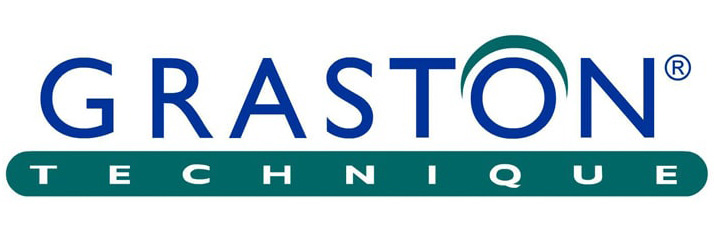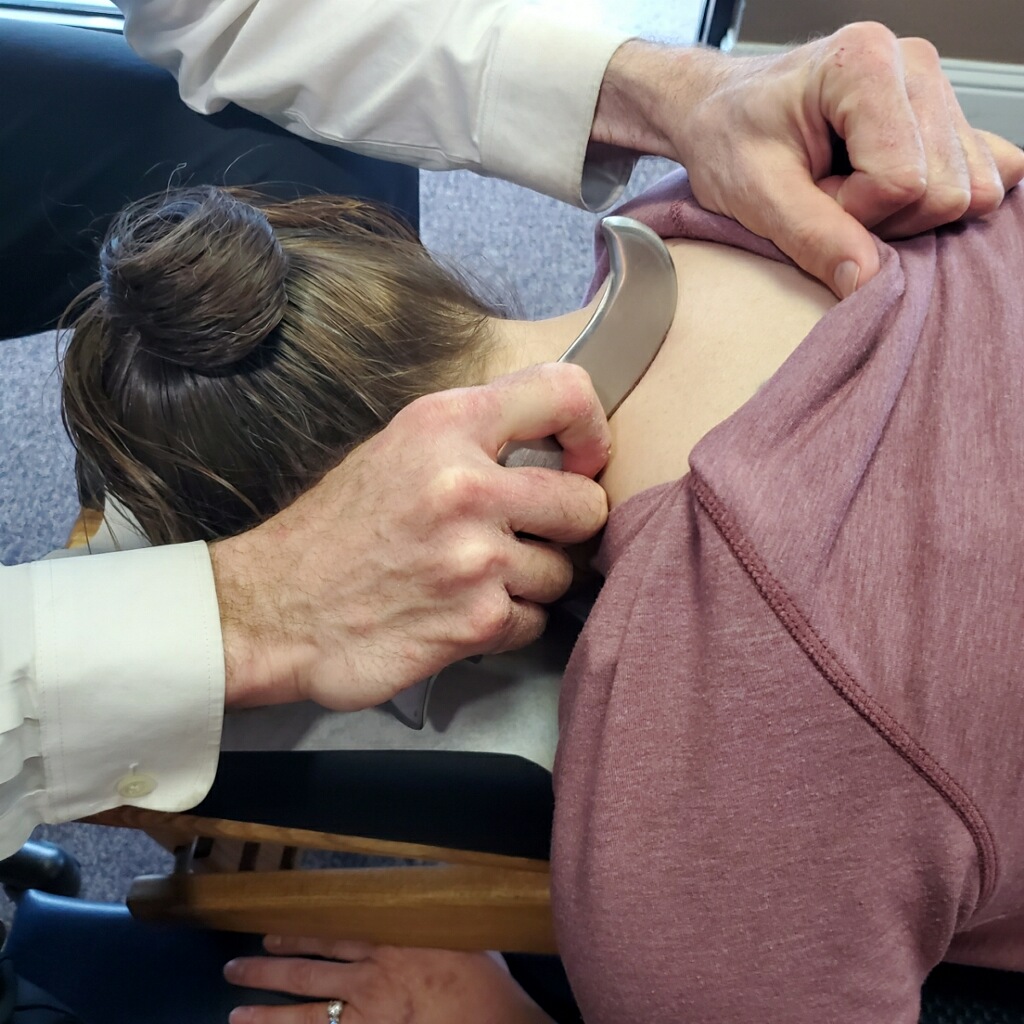Services
Muscle Scraping
Instrument-Assisted Soft Tissue Mobilization (IASTM)
 Muscle Scraping (or IASTM) involves using a range of tools to enable clinicians to efficiently locate and treat individuals diagnosed with soft-tissue dysfunction. Typically a tapered edge stainless steel instrument is utilized. The Graston® Technique is one popular example of IASTM that is widely known, and NNC’s Dr. Welch is trained in the Graston® Technique.
Muscle Scraping (or IASTM) involves using a range of tools to enable clinicians to efficiently locate and treat individuals diagnosed with soft-tissue dysfunction. Typically a tapered edge stainless steel instrument is utilized. The Graston® Technique is one popular example of IASTM that is widely known, and NNC’s Dr. Welch is trained in the Graston® Technique.
What Is a Soft-Tissue Injury?
A soft-tissue injury involves damage to the muscles, ligaments, tendons and/or fascia somewhere in the body. Common soft-tissue injuries usually occur from a sprain, strain, blow to the body resulting in a contusion (ruptured blood vessels/bruising), or overuse of a particular body part. Soft tissue injuries can result in pain, swelling, bruising and loss of function. Adhesions and eventually scar tissue may develop as a result of repeated aggravation, surgery, or immobilization.
Muscle Scraping can be used to help alleviate the following symptoms:
- Limited motion
- Pain during motion
- Motor control issues (muscle activation/coordination)
- Issues building muscle strength
At Northern Nevada Chiropractic, common conditions that are typically treated with Muscle Scraping include:
- Neck and low back pain strain/sprains
- Carpal tunnel syndrome
- Lateral (Tennis elbow) and Medial (Golfer’s elbow) epicondylitis
- Plantar fasciitis (foot)
- Rotator cuff tendinitis (shoulder)
- Achilles tendinitis (ankle)
- Patellafemoral disorders (knee)
- Shin splints
- Scar tissue

The main benefits of Muscle Scraping are:
- Separates and breaks down collagen cross-links, and splays and stretches connective tissue and muscle fibers
- Increases skin temperature
- Facilitates reflex changes in the chronic muscle holding pattern
- Increases the rate and amount of blood flow to and from the area
- Increases cellular activity in the region, including fibroblasts and mast cells
- Increases histamine response secondary to mast cell activity
Studies have shown clinical benefits of IASTM with improvements in range of motion, strength and pain perception following treatment.
FAQs of Muscle Scraping
What does Muscle Scraping do/How does it work?
Often, patients with soft-tissue injuries do not seek out treatment until the injuries have become chronic (weeks or months after injury). By this point, the body has completed most of its self-healing process. Scar tissue and adhesions are formed during this healing process, which limits motion and often causes pain.
Scar tissue and adhesions essentially act like shrink wrap around tissue and joint spaces. When scar tissue is created after injury, new cells are laid down excessively and in a disorganized manner. Think of a mesh-work instead of long elastic parallel fibers. Scar tissue and adhesions prevent the muscle or other tissues from lengthening appropriately.
It is often necessary for the physician to restart the healing process in order to remodel the soft tissues in the affected area. By introducing controlled microtrauma to affected soft tissue using muscle scraping, a local inflammatory response is stimulated. This microtrauma initiates reabsorption of excessive scar tissue and facilitates a remodeling of the affected soft-tissue structures. After the treatment, scar tissue can be remodeled so that the cells become organized in a direction that facilitates proper anatomical movement.
What should I expect after a treatment?
It is important to note that muscle scraping’s ability to reinitiate first-stage healing comes from the fact that it is essentially reinjuring the body (although to a lesser degree and in a controlled fashion). This may cause mild discomfort during the procedure. Patients may experience soreness in the treatment area for a day or two following treatment. Bruising can occur, although this is not common.
How many treatments should I expect before I improve?
Results vary from individual to individual. Patients usually receive two treatments per week, over 3-4 weeks. Most patients have a positive response by the third or fourth treatment.
What is involved in a typical Muscle Scraping treatment session?
- Warm up the tissue to make it more pliable (heat, aerobic exercise, etc.)
- Perform IASTM therapy
- Engage in light exercise to promote proper movement patterns. IASTM is often accompanied by home exercise, with the goal of repatterning new, healthy soft tissue fibers to be laid down. Patients who perform the home stretches and greatly accelerate the process.
Patient Testimonials
Watch what our patients have to say about the service and healing they received at the hands of our Northern Nevada Chiropractic doctors.

